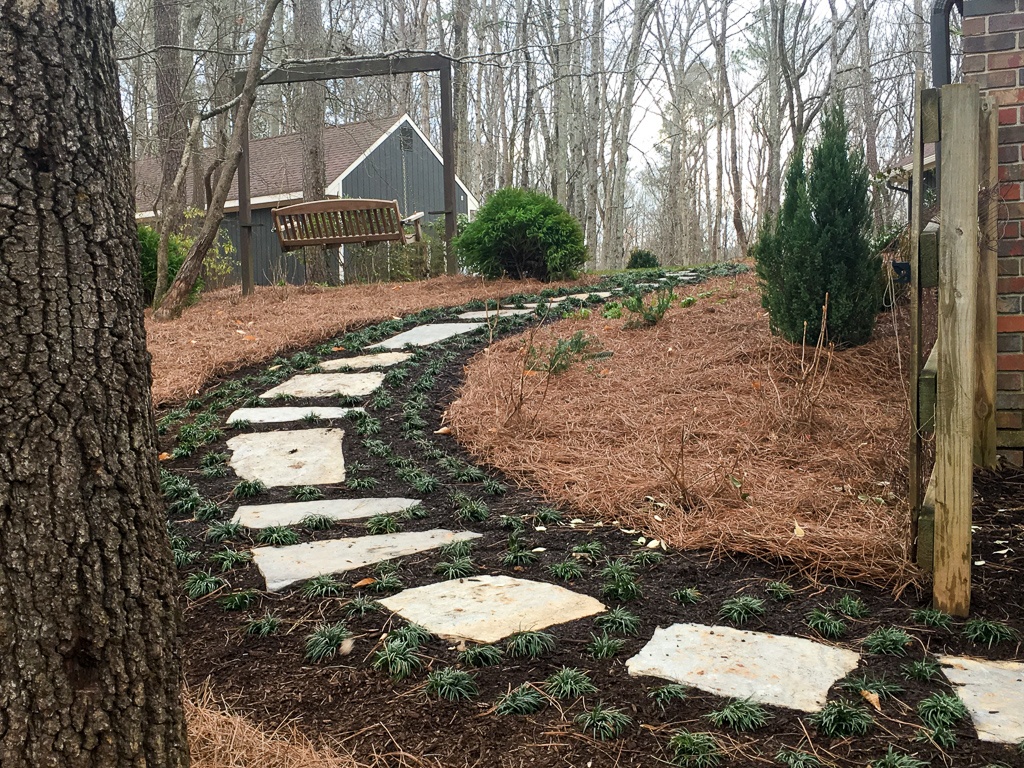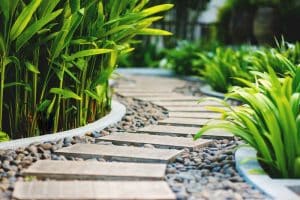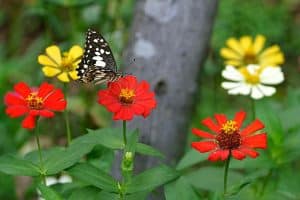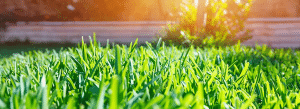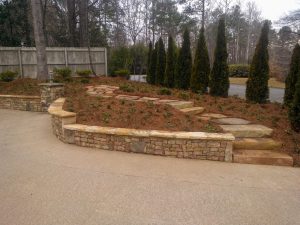Mulch is one of the most beneficial tools in the landscaping toolbox. Not only does it work wonders for a property’s curb appeal, but it also has several important benefits that contribute to both soil and plant health. Most people think about mulching in the spring, when they’re emerging from their long winter’s nap and ready to spend time outside. The importance of fall mulching shouldn’t be overlooked, however. Your landscape beds probably looking a little faded after the summer heat and sun. Also the upcoming cold weather can stress or harm exposed foliage and even root systems. Touching up your mulch is a good way to keep your property looking its best and to help your plants and trees stay healthy. There are right ways and wrong ways to mulch, however.
In this blog we will take a look at:
- the importance of proper mulching
- problems associated with improper mulching techniques
- the best type of mulch to use
- how to apply mulch
Benefits of Mulch Around Trees and in the Garden
When applied correctly, mulch is one of your garden’s best friends. Housing developments and urban environments tend to have poor soil quality. The top layer of soil is usually scraped away when a property is developed, leaving more compacted, less fertile ground underneath. Add the fact that leaves, lawn clippings and other types of organic matter are often hauled away as refuse rather than allowed to break down and replenish the soil, and you have a recipe for poor growing conditions. Mulch can help correct that, as well as other landscape problems, in the following ways:
- Moisture Retention: a 2–4-inch layer of mulch can reduce soil water loss to evaporation by 33%.
- Weed Control: weeds need light to survive. Mulch installed to the proper depth can keep most weeds from sprouting.
- Disease Prevention: mulch helps keep soil-borne fungi like black spot from splashing up onto plant foliage when it rains.
- Soil Insulation: the right amount of mulch helps moderate soil temperature, protecting root systems from extremes of both heat and cold.
- Soil Fertility: the decomposition of organic matter improves your soil’s ability to sustain plant life.
- Runoff Reduction: some types of mulch absorb water, reducing runoff and soil erosion.
- Less Soil Compaction: mulch helps break up hard clay like we have in the Atlanta area, allowing water to better reach root systems.
- Protection from Lawn Equipment: sufficient mulch coverage will help protect root systems from things like string trimmer damage, while also extending the useful life of that equipment.
With all of those benefits, you’re probably thinking that mulch is a wonder drug for your garden. But like any health supplement, knowing the importance of proper mulching will keep you from using too much or in the wrong way can lead to more problems than it solves.
Problems That Can Develop From Improper Mulching
Too much of a good thing applies to more than just that second – or third – serving of pumpkin pie on Thanksgiving. Using too much mulch can create the following problems:
- Mulch applied too thickly can form a compacted mat and reduce water and light penetration.
- Too much mulch piled around the base of a tree – known as a “mulch volcano”—causes a whole host of issues. Bark decay, fungal disease, insect infestations, and stem girdling roots are just a few of the problems that can arise from this practice.
- More than 2 inches of mulch applied to wet soil can lead to root rot.
Some mulches, especially freshly chipped wood or mulch which has been improperly stored, can drastically alter the pH of your soil. Anaerobic or “sour” mulch will give off a pungent odor. This comes from volatile organic acids that can be toxic to alkaline-preferring plants. If your mulch is warm to the touch and smells bad, don’t use it!
Applying too little mulch doesn’t create the same level of potentially deadly problems as applying too much, but it does come with its own issues. Insufficient mulch won’t prevent weeds, disease or evaporation, wasting both the time and money it takes to install it.
Choosing The Best Mulch Material
The two main categories of mulch are inorganic and organic. Inorganic mulch consists of things like stones, lava rocks, and shredded rubber. The benefit of this type of landscape material is that it doesn’t break down over time, meaning less maintenance for the homeowner. However, it also fails to provide needed nutrients or to improve soil structure. Large areas of inorganic mulch can also absorb heat from sunlight, increasing the temperature of the soil. This can cause the landscape bed to become too hot and dry for many types of vegetation.
For the Atlanta area, organic mulch is a better choice. Not only does it protect your landscaping beds from the hot summer sun, but it also helps break down the hard clay soil so that root systems have more access to water.
There are a number of organic mulch types that are suitable for most landscaping projects, including pine straw and both hardwood and softwood bark, chips and nuggets. Pine derivatives are best used for acid-loving plants such as azaleas, rhododendrons, hydrangeas and gardenias due to their acidic nature, which decreases the pH of your soil.
Many tree services in our area offer free wood chips to homeowners, but it’s important to note that freshly mulched wood will deplete nitrogen from your soil as it decomposes. This can cause your plants to struggle if a balanced fertilizer isn’t applied at the same time. While fresh wood chips can be useful in more natural areas, they’re not recommended for use in cultivated vegetable gardens or flower beds. That’s why it’s good to know the importance of proper mulching.
How Much Mulch Should I Apply?
Just as mulch type has an effect on plant and soil health, so does the method of application.
New Landscape Beds: if you’re installing landscaping around a recently constructed home, or creating a new landscape bed on an existing property, it’s ideal to mulch to a depth of 2-4 inches on well-drained soil. If the area has drainage problems that haven’t been addressed, a thinner layer of mulch should help avoid issues like root rot.
Existing Landscape Beds: while it’s tempting to just throw a new layer of much on top of the old to freshen it up, doing so without first checking the depth can result in dehydration, disease or suffocation. If appearance is the main concern, try raking the mulch to bring the less sun-bleached layer to the surface. You can also remove some of the old material and replace it.
No Mulch Volcanos: it’s important to remember that mulch should be installed at least six inches away from a tree trunk, and it should never be piled against the bark. For plants, the same principle applies. Mulch should never be placed on top of a flower or shrub, or even directly against it. Your vegetation needs room to breathe!
For questions or concerns regarding the importance of proper mulching or other landscaping issues, or to schedule service, contact Oasis Landscapes & Irrigation.

